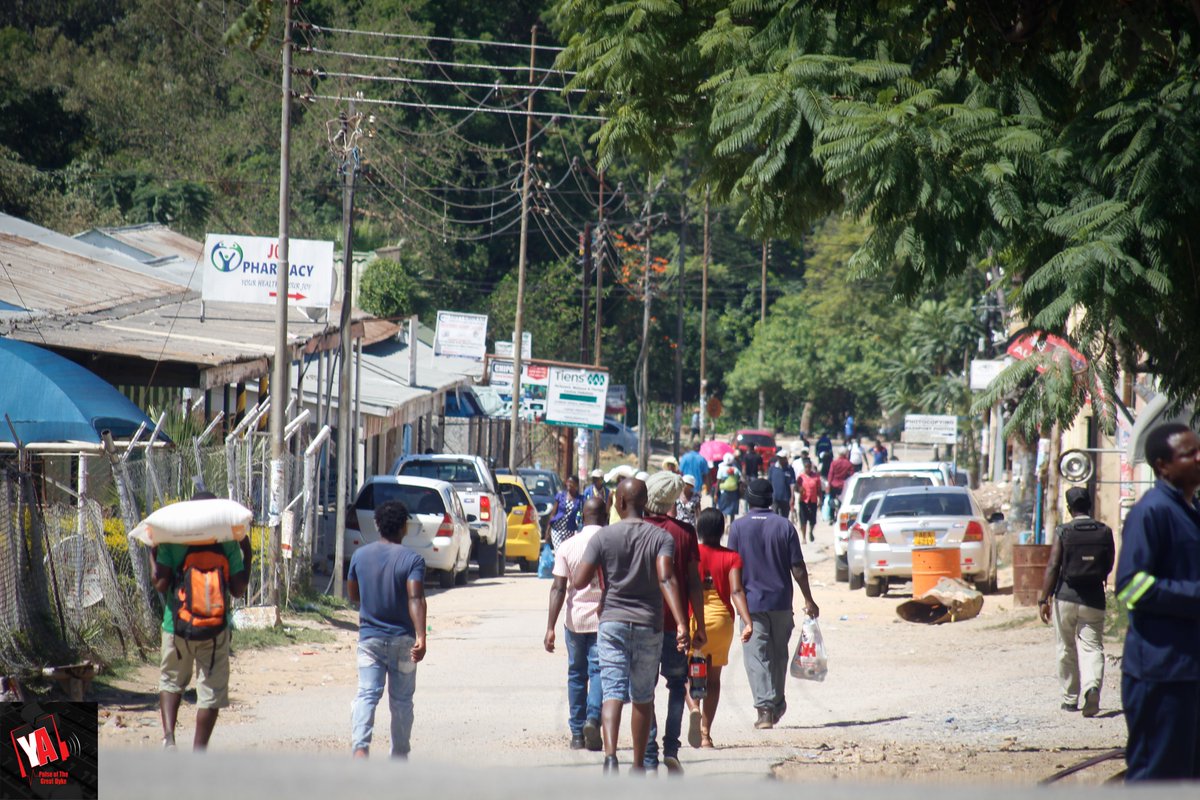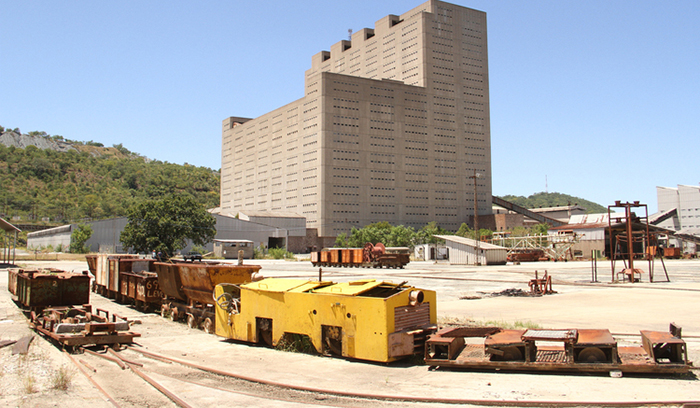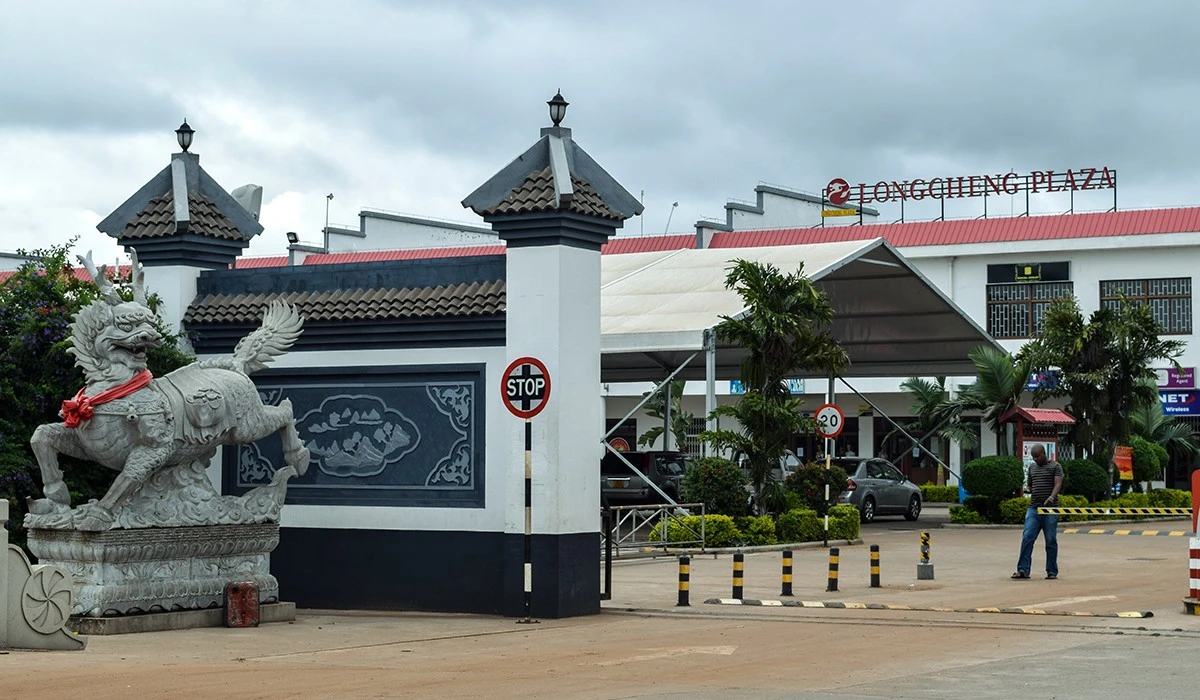Zvishavane is a town located in the south-central region of Zimbabwe, known for its historical roots and economic contributions.

Zvishavane: picture credit to L Hong
This comprehensive biography explores various aspects of Zvishavane, including its name origin, economic activities, football clubs, local government, and geographical features.
ALSO READ: https://zimprofiles.com/exploring-hwange-a-comprehensive-overview-of-the-zimbabwe-mining-town/
Name Origin
The name “Zvishavane” is derived from the Sindebele word “shavani,” meaning “finger millet” or “trading together.”
The town’s nomenclature reflects its historical connection to agricultural and trade practices.
Platinum Mine
Zvishavane is surrounded by low hills and gained prominence through its platinum mine, a significant economic asset.
The mining area played a crucial role in the town’s development, contributing to its economic growth and demographic changes over the years.
Mimosa Platinum Mine:
- Location: Zvishavane, Midlands Province, Zimbabwe
- Owned by: Mimosa Mining Company, a joint venture between Sibanye-Stillwater and Impala Platinum
- Type of mine: Underground, focusing on platinum group metals (PGMs) and base metals
- History: First platinum mine in the Great Dyke of Zimbabwe, operational since 1991
- Production: Around 120,000 ounces of platinum per year
- Reserves: As of 2022, 3.2 million ounces of 4E PGM on a 50% attributable basis
- Current focus: Developing the Mtshingwe Shaft and further evaluating the Mtshingwe Block to extend the mine life beyond 2032
- Impact: Major employers in Zvishavane, contribute to Zimbabwe’s economy, but also raise concerns about environmental impact and mining safety
Additional information:
- The Mimosa mine is situated in the Wedza sub-chamber of the Great Dyke, a geological formation rich in PGMs.
- The mine utilizes mechanized mining techniques and processing methods.
- Mimosa has a community development program focusing on education, healthcare, and infrastructure projects.
- Environmental concerns include waste disposal, water pollution, and dust emissions. Safety concerns arise from potential accidents and long-term health risks for miners.
Would you like to know more about a specific aspect of the Mimosa Platinum Mine, like its mining methods, environmental impact, or community initiatives?
Shabanie-Mashaba Mines

Shabanie mine. picture credit to Nehand Radio
The Shabanie Asbestos Mine, also known as Shabanie-Mashaba Mines (SMM), is a historically significant, yet controversial, landmark in Zimbabwe.
Located in the town of Zvishavane, Midlands Province, it boasts a complex and multifaceted past.
A Legacy of Extraction:
Mining Beginnings: Discovered in 1916, the Shabanie Mine became a major source of chrysotile asbestos, a highly sought-after mineral for its heat-resistant and insulating properties. It played a crucial role in Zimbabwe’s economy for decades, generating revenue and employment.
Booming Town: Zvishavane emerged and thrived alongside the mine, with Shabanie-Mashaba Mines acting as the town’s main employer and provider of social services. Schools, hospitals, and housing were built, creating a bustling community dependent on the mine’s operations.
The Dark Side of Asbestos:
Health Hazards: The dangers of asbestos exposure were largely ignored throughout the mine’s active years. Miners and residents alike faced high risks of developing lung diseases like mesothelioma and asbestosis, leading to a legacy of suffering and premature deaths.
Environmental Impact: Mine waste and dust pollution have significantly affected the surrounding environment. Asbestos fibres remain present in the air and soil, posing a long-term health threat to the community.
Shifting Landscapes:
Mine Closure: Facing declining demand and international pressure due to health concerns, the Shabanie Mine entered a period of decline in the late 20th century. It eventually ceased operations in 2003, leaving behind a ghost town and a community grappling with the consequences of its closure.
Revival Attempts: Recent years have seen efforts to revive the mine, focusing on extracting alternative minerals and utilizing waste dumps for sustainable purposes. However, concerns regarding environmental and health risks remain a major obstacle.
Shabanie’s story is a complex one, woven with threads of economic prosperity, human suffering, and environmental challenges.
Its future remains uncertain, but its past serves as a stark reminder of the need for responsible resource management and prioritizing human health and well-being.
ALSO READ: Exploring Bindura: A Comprehensive Guide to the Heart of Mashonaland Central
Football Club Platinum

Mandava stadium. image credit to fc platinum
Founding and Early Days:
FC Platinum wasn’t always platinum. They began their journey in 1995 as Mimosa Football Club, named after the Zvishavane-based Mimosa Mine, from where the club drew its support and sponsorship.
In 2003, they gained promotion to the top tier of Zimbabwean football, the Premier Soccer League.
However, it wasn’t until 2011 that they adopted their current name, FC Platinum, symbolizing their ambition and desire for success.
Rise to the Top:
The name change proved to be a turning point. FC Platinum embarked on a trophy-laden era, dominating domestic football and establishing itself as a force to be reckoned with.
Titles Won:
- Zimbabwe Premier Soccer League: 4 times (2017, 2018, 2019, 2021-22)
- Chibuku Super Cup: 1 time (2020-21)
International Stage:
FC Platinum’s domestic dominance translated into continental success. They regularly participate in the CAF Champions League and CAF Confederation Cup, representing Zimbabwe on the international stage.
Their biggest achievement in continental competitions was reaching the group stage of the CAF Champions League in 2018 and 2019.
Home Ground:
FC Platinum calls the magnificent Mandava Stadium their home. Known for its vibrant atmosphere and passionate supporters, it’s a fortress for the Platinum Boys.
Current Coach and Sponsor:
The team is currently guided by renowned Zimbabwean coach Norman Mapeza, who previously led the club to several league titles.
FC Platinum enjoys strong backing from its main sponsor, Mimosa Mining Company.
A Legacy of Success:
FC Platinum’s story is one of remarkable transformation and sustained success.
From humble beginnings, they’ve become Zimbabwe’s premier football club, inspiring a generation of young players and captivating the nation with their exciting brand of football.
Their journey is far from over, and the Platinum Boys are poised to continue writing their name in Zimbabwean football history.
Shabanie Mine FC
Shabanie Mine is another notable football club in Zvishavane, competing in the ZIFA Division One Central Region.
The club has played a role in the local sports scene, contributing to the vibrant football culture within the town.
Founded in 1914, it currently plays in the second tier of Zimbabwean football, the ZIFA Division One Central Region.
The club is affiliated with the mining company Shabanie-Mashava Mines (SMM). Their colours are blue and white, and their nickname, Bvaru-Bvaru, translates to “mine men” in Shona.
Shabanie Mine’s biggest achievement was reaching the final of the Zimbabwean Cup in 2001, where they lost to Highlanders FC.
They also participated in the African Cup Winners’ Cup in 2002, being eliminated in the first round by Saint-Michel United of Seychelles.
A popular club in Zvishavane, Shabanie Mine enjoys well-attended home matches and boasts a dedicated fanbase that supports them through thick and thin.
ALSO READ: https://zimprofiles.com/getting-to-know-kariba-chronicles-balancing-progress-and-conservation/
Zvishavane Town Council Contacts

picture credit to Zvishavane Town Council
The local governance of Zvishavane is overseen by two entities – the rural district council and the urban council.
The Zvishavane Town Council, established under the Zimbabwe Urban Councils Act, Chapter 29.15, administers the urban district.
For further information or inquiries, individuals can contact the Zvishavane Town Council directly.
Contacts:
Zvishavane Town Council, Box 5, Zvishavane.
Tel: 263 51 2181/ 2555/ 2465
Cell: 263 78 501 4662/263 77 223 8589
Email: admin@ztc.org.zw or mukutut@ztc.org.zw or mandishonaf@ztc.org.zw
Culture
Zvishavane boasts a unique cultural heritage shaped by its historical and economic experiences.
The town’s culture reflects a blend of traditional influences and the modern dynamics brought about by industrial activities and urbanization.
Geographical Location
Situated in the south-central region of Zimbabwe, Zvishavane is surrounded by picturesque low hills.
The town enjoys direct rail links to major cities such as Harare, Bulawayo, and Maputo in Mozambique, facilitating transportation and connectivity.
- Latitude: -20° 20′ 00″ South (or -20.333333 in decimal degrees)
- Longitude: 30° 02′ 00″ East (or 29.983333 in decimal degrees)
Additional information:
- Zvishavane is located in the Midlands Province of Zimbabwe.
- It is situated in the southeastern part of the country, approximately 280 kilometres southwest of the capital Harare.
- The town lies in the Wedza sub-chamber of the Great Dyke, a geological formation rich in platinum group metals and other minerals.
Climate
The climate in Zvishavane contributes to its suitability for certain economic activities. The town experiences, impacting agriculture, mining, and the overall livelihood of its residents.
ALSO READ: https://zimprofiles.com/journey-through-chinhoyi-history-culture-and-the-silent-pool/
Educational Institutions in Zvishavane
Zvishavane is a town in the Midlands Province of Zimbabwe, known for its mining industry and vibrant community.
It caters to educational needs at various levels, offering options for primary, secondary, and higher education. Here’s a glimpse into some of the prominent institutions:
Primary Schools:
- Shabanie Mine Primary School: Established in 1951, this government-run school has a long history of serving the community.
- Zvishavane Primary School: Another government school providing primary education to local children.
- Kandodo Primary School: Situated in the Kandodo suburb, this primary school offers quality education in a welcoming environment.
High Schools:
- Zvishavane High School: A renowned government-run high school with a strong academic reputation.
- Shabanie Mine High School: Affiliated with the Shabanie-Mashava Mines, this high school offers secondary education within the mine community.
- Jeffrey Hooper Government High School: Named after a former District Administrator, this government-run school provides quality secondary education.
Universities:
- Midlands State University, Zvishavane Campus: MSU opened its Zvishavane campus in 2012, offering programs in Mining Sciences, Peace Studies, Politics and Public Management, and Information Communication Technology.
Additional Options:
- Private Schools: Zvishavane also boasts several private primary and secondary schools, such as Zvishavane Christian School and Mandava High School.
- Vocational Training Centers: Opportunities for technical and vocational training exist through organizations like Zvishavane Polytechnic and Mimosa Vocational Training Centre.
References
- Britannica – Zvishavane
- Wikipedia – Zvishavane District
- Wikipedia – F.C. Platinum



